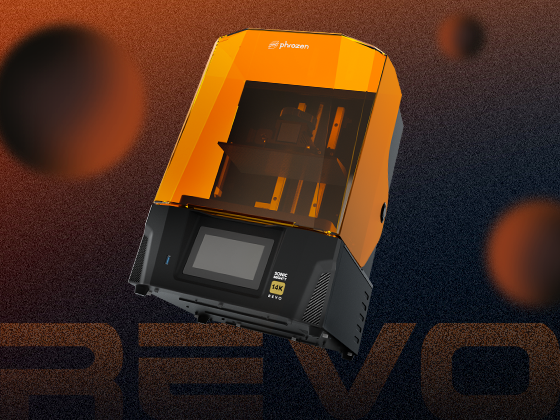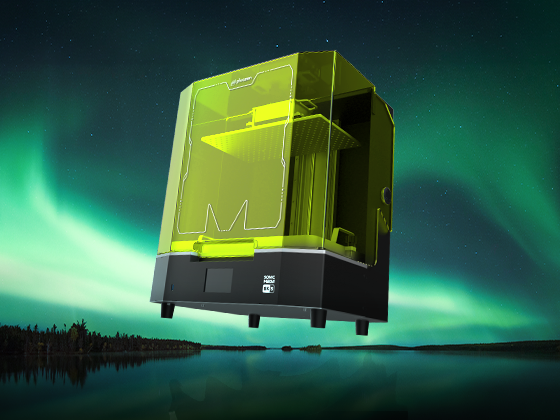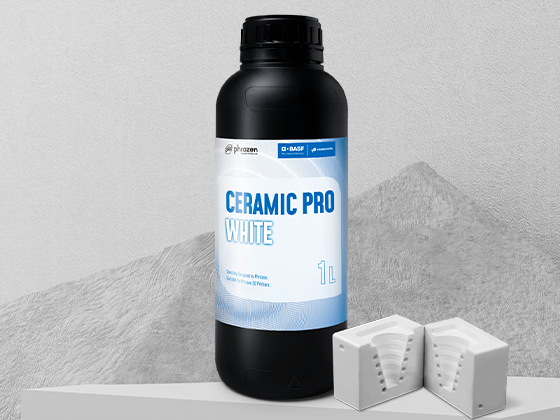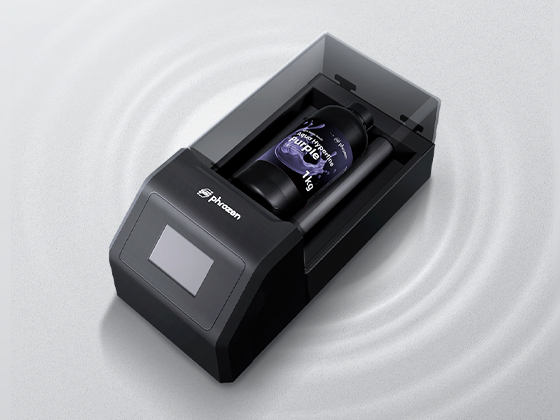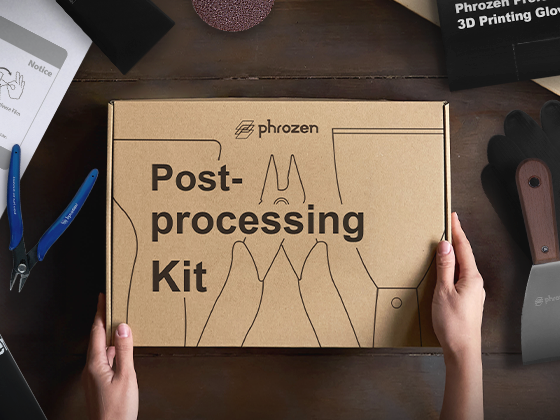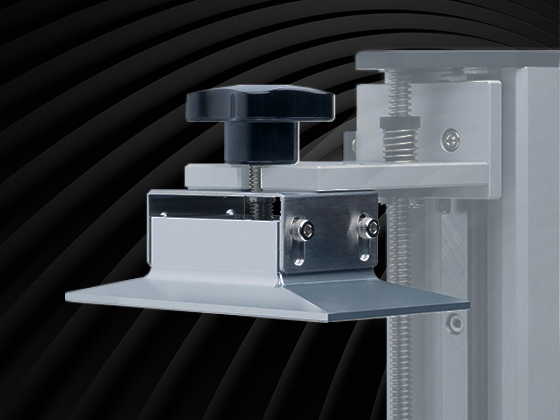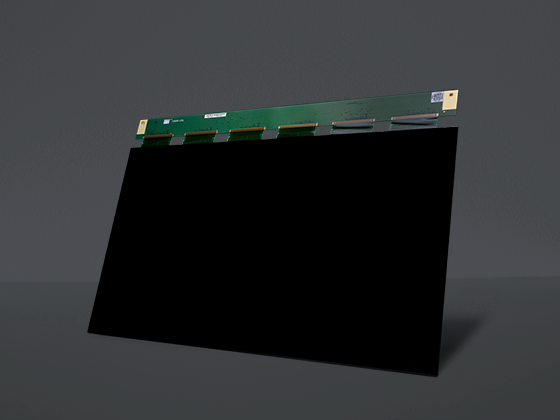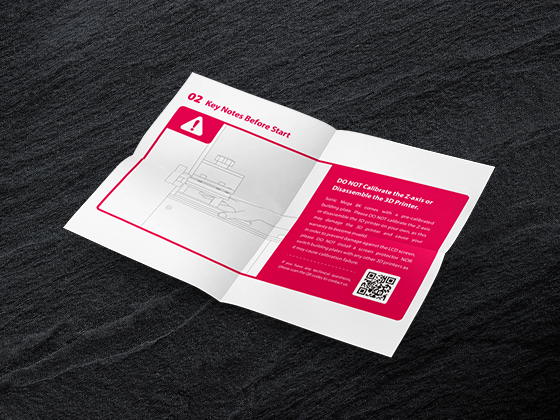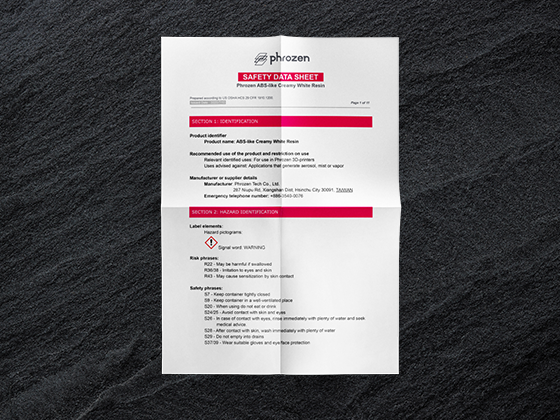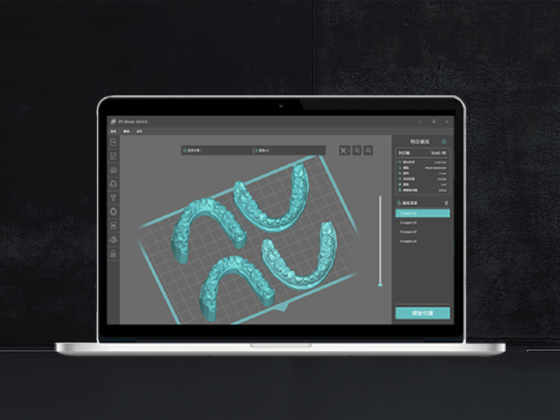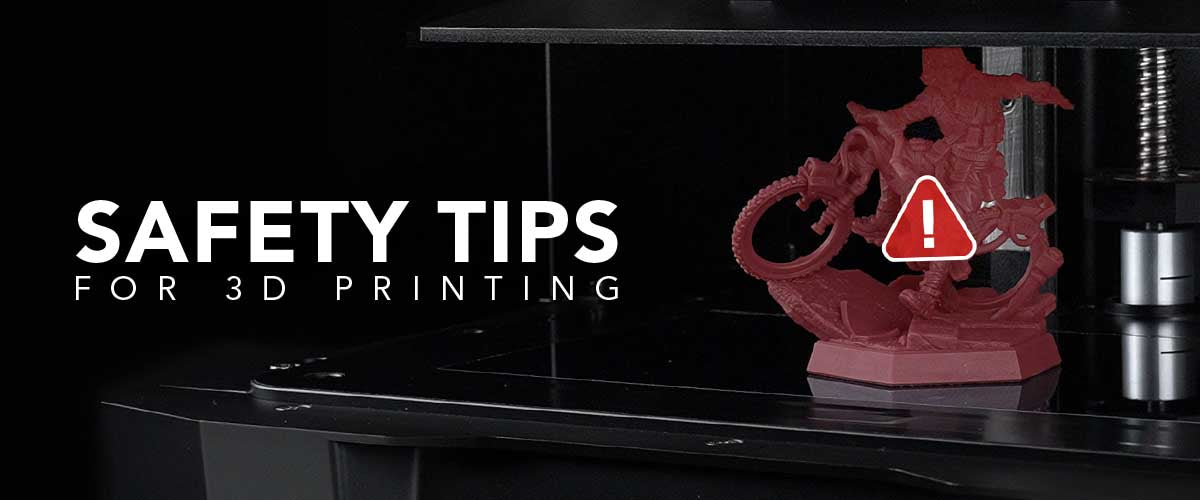Imagine a world where creating custom products or complex parts no longer takes weeks or even months. Picture a scenario where traditional manufacturing constraints, such as time, cost, and waste, no longer hold back innovation.
Whether you’re an engineer looking to streamline your design process or a hobbyist eager to bring your ideas to life, you’ve likely faced the frustration of slow prototyping, high costs, and the limitations of traditional manufacturing methods.
The good news? 3D printing offers a revolutionary solution to these problems. This technology is not just a passing trend; it's a game-changer, enabling faster production times, lower costs, and unprecedented creative freedom.
In this comprehensive guide, we'll explore how 3D printing works, delve into its various applications, and uncover the potential it holds for the future of manufacturing.
Whether you're new to the concept or looking to deepen your understanding, this guide will equip you with the knowledge you need to harness the power of 3D printing effectively. So, let's dive in!
The Problem: Traditional Manufacturing Challenges
Traditional manufacturing methods often involve long lead times, high costs, and significant material waste. Whether it’s machining, casting, or molding, these processes can be inefficient, especially when dealing with complex designs or small production runs.
For businesses and innovators looking to bring new products to market quickly, these challenges can be a major obstacle. But there’s a solution that’s transforming the way we think about making things.
The Solution: How Does 3D Printing Work?
3D printing, also known as additive manufacturing, is a revolutionary process that creates a physical object from a digital design. Unlike traditional methods that cut away material from a larger block, 3D printing builds objects layer by layer, adding material only where it’s needed.
This approach not only reduces waste but also allows for the creation of intricate designs that would be impossible or extremely costly to achieve with conventional techniques.
What is 3D Printing and How Does It Work?
3D printing begins with a digital model of the object you want to create. This model is designed using computer-aided design (CAD) software, which acts as the blueprint for the 3D printer. The process involves three main steps: 3D modeling, slicing, and printing.
3D Modeling
The first step in how 3D printing works is creating a digital model. This model can be anything from a simple geometric shape to a complex mechanical part.
Designers use CAD software to develop these models, ensuring every detail is accounted for. If you’re not a designer, you can also find pre-made models online through various 3D model libraries such as PIXUP, Cults, and Thingiverse.
Our blog on how to create a 3D model is a must-read if you want a step by step and detailed guide on creating 3D models for your projects.
Moreover, explore our blog on the best websites that offer free 3D print models if you need free and high-quality 3D models for your projects.
Slicing the Model

Software's like Chitubox allows slicing of 3D models
Once the 3D model is ready, it needs to be sliced. Slicing involves dividing the model into hundreds or even thousands of thin horizontal layers. This is crucial because the 3D printer builds the object layer by layer.
The slicing software such as Chitubox generates a file that provides the printer with precise instructions on how to create each layer, ensuring the final product matches the digital design.
Printing Process
With the sliced model file ready, the 3D printing process begins. The 3D printer follows the instructions provided by the slicing software to build the object layer by layer.
Depending on the type of 3D printer and material used, the printer may extrude melted plastic, cure liquid resin with a laser, or fuse metal powder with heat.
The entire process can take anywhere from a few minutes to several days, depending on the size and complexity of the object.
How Do 3D Printers Work? Exploring Different Technologies
Not all 3D printers work the same way. There are several different technologies used in 3D printing, each with its own strengths and ideal applications. Understanding these technologies is key to grasping how do 3D printers work and choosing the right one for your needs.
Fused Deposition Modeling (FDM)
Phrozen Arco uses FDM technology
Fused Deposition Modeling (FDM) is one of the most popular types of 3D printing, especially among hobbyists and small businesses.
How does a 3D printer work in this context? FDM printers use a spool of thermoplastic filament that is fed into a heated nozzle. The nozzle melts the filament and extrudes it onto a build platform, layer by layer, until the object is complete.
- Materials Used: Common materials include PLA (Polylactic Acid) and ABS (Acrylonitrile Butadiene Styrene). PLA is a biodegradable plastic that’s easy to work with, while ABS offers greater strength and heat resistance.
- Applications: FDM is widely used for creating prototypes, hobbyist projects, and functional parts like custom tools, gadgets, and even small-scale production items.
Stereolithography (SLA)
Stereolithography (SLA) is known for its precision and ability to produce highly detailed objects. How does a 3D printer work in SLA?

SLA 3D printers uses laser to cure resin and mold it into 3D models
This technology uses a laser to cure liquid resin into solid plastic. The laser traces each layer of the object on the surface of the resin, hardening it as it goes. Once a layer is complete, the build platform moves to allow the next layer to be cured on top of it.
- Materials Used: SLA printers use photosensitive resin. There are different types of resins available, including standard resins for general use, tough resins for more durable prints, and even biocompatible resins for medical applications.
We have a in-depth blog, 'How to Choose the Right 3D Printing Resin: The Only Guide You'll Need,' to make it easier for you to buy the right resin for your 3D printing projects.
- Applications: SLA is ideal for projects requiring high precision and smooth surface finishes, such as dental models, jewelry, and intricate prototypes.
FDM and SLA 3D printers are the most popular choices. However, they work differently and are excellent for different purposes. If you're interested in digging deeper, explore our comprehensive blog: Resin Vs Filament 3D Printing: Which One is Right For You?
Selective Laser Sintering (SLS)
Selective Laser Sintering (SLS) is a technology primarily used in professional settings for creating durable, functional parts. How do 3D printers work with SLS? SLS uses a high-powered laser to fuse powdered material into a solid object. The powder bed acts as both the material and the support structure, allowing for the creation of complex geometries without additional supports.
- Materials Used: SLS printers can work with a variety of materials, including nylon, metals like aluminum and titanium, and even ceramics.
- Applications: SLS is commonly used in industries like aerospace, automotive, and healthcare to produce strong, durable parts quickly.
Other 3D Printing Technologies
While FDM, SLA, and SLS are the most common 3D printing technologies, there are others worth noting:
- Digital Light Processing (DLP): Similar to SLA, but uses a projector to cure the resin, allowing for faster print times.
- Binder Jetting: Uses a binding agent to glue together powder particles, often used for printing metal parts and ceramics.
- Direct Metal Laser Sintering (DMLS): A variant of SLS specifically designed for metals, used in high-performance applications like aerospace and medical implants.
Materials Used in 3D Printing: The Building Blocks of Innovation
The choice of material in 3D printing can significantly impact the final product’s properties, such as strength, flexibility, and appearance. Let’s explore the most commonly used materials in 3D printing.
Plastics
Plastics are the most commonly used materials in 3D printing due to their versatility, ease of use, and affordability.
- PLA (Polylactic Acid): A biodegradable plastic made from renewable resources like corn starch. It’s user-friendly and ideal for beginners or environmentally conscious projects.
- ABS (Acrylonitrile Butadiene Styrene): A strong, impact-resistant plastic often used in automotive parts, toys, and electronics cases. It’s more heat-resistant than PLA but can be trickier to print with.
- PETG (Polyethylene Terephthalate Glycol): Combines the ease of PLA with the strength of ABS, making it great for creating durable, weather-resistant parts.
Metals
Metal 3D printing is a breakthrough technology that allows for the creation of complex, high-strength parts.
- Stainless Steel: Known for its corrosion resistance and strength, often used in aerospace components and surgical instruments.
- Titanium: Lightweight yet incredibly strong, ideal for aerospace and medical implants where weight and strength are critical.
- Aluminum: Valued for its light weight and good thermal properties, commonly used in automotive and aerospace applications.
Resins

Phrozen has a wide collection of resins for different usages
Resins are primarily used in SLA and DLP printing for creating detailed, smooth-surfaced objects.
- Standard Resin: Perfect for general-purpose printing.
- Tough Resin: Designed for parts that need to withstand stress and impact.
- Castable Resin: Used in the jewelry and dental industries for making molds that burn out cleanly, leaving no residue.
Specialty Materials
For projects requiring specific properties, specialty materials offer unique benefits.
- Carbon Fiber Filaments: Infused with carbon fibers, these filaments are extremely strong and lightweight, ideal for high-performance applications.
- Flexible Filaments: These materials can bend and stretch, perfect for printing items like phone cases and wearable devices.
- Conductive Filaments: Used for creating electronic circuits directly within 3D-printed objects, paving the way for smart devices and wearable tech.
Applications of 3D Printing: Transforming Industries
3D printing is no longer just for prototyping. Its applications span a wide range of industries, each leveraging the technology in innovative ways.
Industrial Manufacturing
3D printing is disrupting traditional manufacturing workflows by enabling rapid prototyping and on-demand production.
- Aerospace: The aerospace industry uses 3D printing to create lightweight components that reduce aircraft weight, thereby lowering fuel consumption. Companies like Boeing and Airbus are leading the way by using 3D printing to produce parts with complex geometries that would be impossible to create with traditional methods.
- Automotive: Car manufacturers are increasingly using 3D printing for prototyping, custom tools, and even end-use parts. This allows for faster innovation cycles and reduced production costs.
Healthcare
The healthcare industry has been one of the biggest adopters of 3D printing, using it for everything from prosthetics to custom implants.
- Prosthetics: 3D printing allows for the creation of custom prosthetic limbs that are perfectly tailored to fit the unique anatomy of each patient. This not only improves comfort but also enhances functionality. Patients can receive prosthetics faster and at a lower cost compared to traditional manufacturing methods.
- Bioprinting: Although still in its experimental stages, 3D bioprinting is an emerging field where living cells are printed to create tissue and organ models. While fully functional organs are still a goal for the future, significant advancements are being made in creating tissue scaffolds and other biological structures for research and therapeutic purposes.
Consumer Products
3D printing has enabled a new era of mass customization, allowing consumers to purchase products that are uniquely tailored to their needs and preferences.
- Footwear: Companies like Adidas are using 3D printing to create custom insoles and shoes that are tailored to the exact shape of the wearer’s foot. This technology not only enhances comfort but also improves performance for athletes and regular users alike.
- Eyewear: With 3D printing, eyewear companies can produce custom-fit frames based on an individual’s facial measurements. This ensures a perfect fit and allows for unique designs that cater to personal tastes.
Construction
3D printing is making its way into the construction industry, offering new possibilities for faster, more cost-effective building methods.
- 3D-Printed Homes: Entire homes can now be 3D printed in just a few days, dramatically reducing construction time and costs. These homes are built layer by layer using concrete or other building materials, and they offer the potential for affordable housing solutions in areas with limited resources.
- Complex Architectural Elements: 3D printing allows architects to create intricate designs and structures that would be difficult or impossible to achieve with traditional construction methods. This opens up new possibilities for creativity in architecture.
Read our blog, '5 Reasons 3D Printing Will Shape the Future of Construction,' to learn more about the impact of 3D printing on the construction industry.
Advantages and Disadvantages of 3D Printing
Like any technology, 3D printing comes with its own set of pros and cons. Let’s break them down so you can see the big picture.
Advantages
- Cost Efficiency: 3D printing significantly reduces the cost of prototyping and small-batch production. Since you only use the material needed for the object, there’s minimal waste, which can result in substantial savings.
- Customization: One of the biggest advantages of 3D printing is the ability to customize each item. Whether it’s a prosthetic limb tailored to fit perfectly or a one-of-a-kind piece of jewelry, 3D printing allows for unparalleled personalization.
- Speed: Traditional manufacturing processes can take weeks or even months to go from concept to prototype. With 3D printing, you can have a physical model in your hands within hours, speeding up the design and development process.
- Complexity: 3D printing can produce intricate designs that would be impossible or extremely costly to create using traditional methods. This opens up new possibilities for innovation and design.
Disadvantages
- Material Limitations: Not all materials are suitable for 3D printing, particularly when high strength, flexibility, or specific thermal properties are required. While there are many materials available, they may not always meet the specific needs of certain applications.
- Post-Processing: Many 3D printed objects require additional finishing work, such as sanding, painting, or polishing. This can add time and cost to the process, especially if the object needs to meet specific aesthetic or functional standards.
- Scalability: While 3D printing is excellent for prototyping and small-batch production, it is currently less efficient for mass production compared to traditional manufacturing methods. Producing large quantities of items using 3D printing can be time-consuming and expensive.
Future of 3D Printing
The future of 3D printing is incredibly promising, with ongoing advancements in technology, materials, and applications. Here’s a glimpse of what’s on the horizon.
Technological Advancements
As 3D printing technology continues to evolve, we can expect faster, more accurate printers that can work with a broader range of materials. Innovations like multi-material printing and the ability to print at higher resolutions are just the beginning.
- Multi-Material Printing: Future printers may be able to print with multiple materials simultaneously, allowing for more complex and functional designs. Imagine printing a single object that includes both rigid and flexible parts, or even electronic components embedded within.
- Improved Speed: While current 3D printers can take hours or even days to complete a project, new technologies like continuous liquid interface production (CLIP) are dramatically speeding up the process. Faster printing times will make 3D printing more viable for larger-scale manufacturing. Moreover, resins like the Phrozen Speed 3D Printing Resin, have also been developed to provided 3D printers with increased speed.
Market Growth
The 3D printing market is expected to continue growing rapidly as more industries adopt the technology. From healthcare to aerospace, the demand for customized, on-demand production is driving this growth.
In fact, in 2023 alone, industry reports highlighted that the 3D printing industry was valued at more than 20 billion. And by 2033, this number is expected to cross more than a 100 billion.
Potential Impact
The continued evolution of 3D printing has the potential to disrupt traditional manufacturing and supply chains. As the technology improves, we could see a shift toward more localized production, reducing the need for large-scale factories and complex logistics networks.
- Decentralized Manufacturing: 3D printing enables companies to produce goods on demand, closer to where they are needed. This could reduce the reliance on large warehouses and transportation networks, leading to lower costs and a smaller environmental footprint.
- Sustainability: By reducing waste and enabling the use of more sustainable materials, 3D printing could play a significant role in making manufacturing more environmentally friendly.
Choosing the Right 3D Printer
Whether you’re a hobbyist just starting out or a professional looking to integrate 3D printing into your business, choosing the right 3D printer is crucial.
For Hobbyists
If you’re new to 3D printing or plan to use it for personal projects, you’ll want a printer that’s easy to use, affordable, and reliable.
- Entry-Level Printers: Models like the Phrozen Sonic Mini 8K S or Sonic Mini 8K offer a good balance of quality and affordability, making them ideal for beginners. These printers are widely supported by a large community of users, which can be helpful when troubleshooting or looking for tips.
Check out our blog, 'A Complete Overview of Sonic Mini 8K S vs. Sonic Mini 8K', to know the differences between these two beginner-friendly 3D printers.
- Considerations: Look for features like auto bed leveling, which simplifies the setup process, and consider the size of the build platform to ensure it meets your project needs.
For Professionals
Professionals need more advanced printers capable of handling complex projects, larger volumes, and a variety of materials.
- High-End Printers: Machines like the Phrozen Mighty 8K or Mega 8K S offer precision, reliability, and the ability to work with a wide range of materials. These printers are well-suited for professional environments where quality and consistency are paramount.
- Considerations: Focus on material compatibility, print volume, and software integration. Also, consider the total cost of ownership, including maintenance, materials, and potential upgrades.
Maintenance and Costs
Owning a 3D printer involves ongoing maintenance and material costs, so it’s important to factor these into your budget.
- Maintenance: Regular cleaning, calibration, and part replacements are necessary to keep your printer running smoothly. Some higher-end models include self-maintenance features, but all printers require some level of upkeep.
- Costs: Beyond the initial purchase price, consider the cost of filaments or resins, as well as any software you might need. For example, advanced slicing software may offer more features than free versions but often comes with a price tag.
It can be tough to decide what to look for in a 3D printer especially if its your first time purchasing a device. However, we've made it easier for you. Check out our blog,'3D Printer Buying Guide: Find the Perfect Printer for Your Needs,' for a detailed guide on getting the right 3D printer.
Getting Started with 3D Printing
Excited to start your 3D printing journey? Here are some practical tips and resources to help you get off on the right foot.
Software Tools
3D modeling software is the backbone of your 3D printing projects. It’s where you’ll design your objects or modify existing models.
- Tinkercad: A user-friendly, browser-based CAD tool that’s perfect for beginners. It’s free and offers tutorials to help you get started with basic designs.
- Blender: If you’re ready to step up your game, Blender is a powerful, open-source tool that offers advanced modeling capabilities. While it has a steeper learning curve, it’s worth the effort if you plan to get serious about 3D design.
Resources
The 3D printing community is vast and full of resources to help you learn, troubleshoot, and find inspiration.
- PIXUP: A massive online repository of free 3D models that you can download, modify, and print. Whether you’re looking for something simple like a phone stand or an intricate model of a spaceship, you’ll find it here.
- YouTube: Channels like Maker’s Muse, 3D Printing Nerd, and Teaching Tech offer tutorials, reviews, and tips for all skill levels. Watching these videos can give you a better understanding of how to use your printer and what’s possible with 3D printing.
Tips for Beginners
Starting with 3D printing can be a bit overwhelming, but these tips will help you avoid common pitfalls and get the most out of your new hobby.
- Start Small: Begin with simple projects to build your confidence and understanding of how your printer works. Don’t jump straight into complex designs that require a lot of troubleshooting.
- Learn by Doing: Experiment with different settings, materials, and designs to see how they affect the final print. This hands-on experience is invaluable for understanding the capabilities and limitations of your 3D printer.
- Join a Community: Engage with other 3D printing enthusiasts online or in person. Forums, social media groups, and local maker spaces are great places to share knowledge, get advice, and find inspiration.
Conclusion
3D printing is more than just a trend; it’s a transformative technology that’s reshaping industries and unlocking new possibilities for creativity and innovation.
Whether you’re a beginner looking to explore a new hobby or a professional seeking to integrate 3D printing into your workflow, understanding how this technology works and what it can do is crucial.
By choosing the right 3D printer, mastering the tools of the trade, and staying curious, you can harness the power of 3D printing to bring your ideas to life. The possibilities are endless, and the future is bright for anyone willing to explore this exciting technology.

